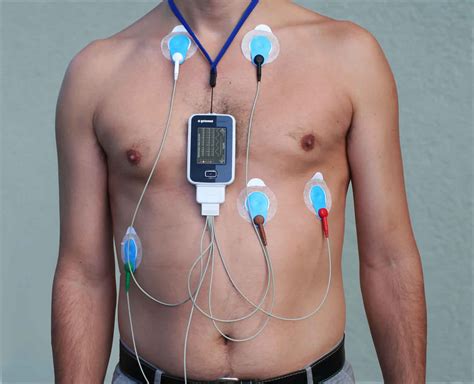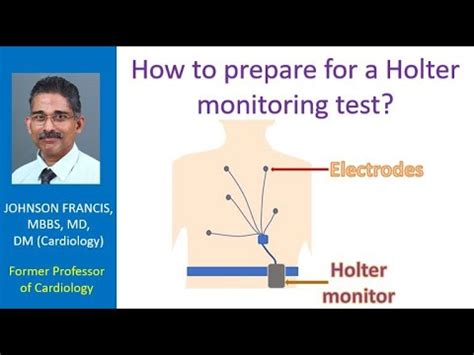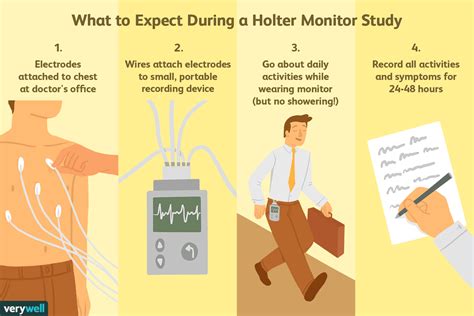Intro
Discover the Holter Monitor Test, a 24-hour ECG recording device, used for cardiac monitoring, arrhythmia detection, and heart rhythm analysis, helping diagnose conditions like atrial fibrillation and palpitations.
The use of medical tests to diagnose and monitor various health conditions has become increasingly common in recent years. One such test is the Holter monitor test, which is used to track the activity of the heart over a prolonged period. This test is essential in helping doctors diagnose and monitor various heart-related conditions, such as arrhythmias, coronary artery disease, and heart failure. In this article, we will delve into the details of the Holter monitor test, its benefits, and how it works.
The Holter monitor test is a non-invasive and painless procedure that involves wearing a small device on the body, typically on the chest. This device records the electrical activity of the heart over a period of 24 to 48 hours, providing valuable information about the heart's rhythm and function. The test is usually prescribed by a doctor if a patient is experiencing symptoms such as palpitations, dizziness, or shortness of breath. By wearing the Holter monitor, patients can go about their daily activities while the device records their heart activity, allowing doctors to get a comprehensive picture of their heart's function.
The importance of the Holter monitor test cannot be overstated. It has revolutionized the way doctors diagnose and monitor heart-related conditions, allowing for early detection and treatment. The test is also useful in monitoring the effectiveness of treatments, such as medications or pacemakers, and in identifying potential complications. With the increasing prevalence of heart disease, the Holter monitor test has become an essential tool in the diagnosis and management of cardiovascular conditions.
What is a Holter Monitor Test?

How Does the Holter Monitor Test Work?
The Holter monitor test works by recording the electrical activity of the heart through electrodes placed on the chest. The electrodes detect the electrical signals produced by the heart and transmit them to the device, which records and stores the data. The device is usually small and portable, allowing patients to wear it comfortably under their clothing. The test is non-invasive and painless, and patients can perform their daily activities while wearing the device.Benefits of the Holter Monitor Test

- Early detection of heart conditions: The test allows doctors to detect heart conditions early, which can improve treatment outcomes and prevent complications.
- Monitoring of treatment effectiveness: The test can be used to monitor the effectiveness of treatments, such as medications or pacemakers.
- Identification of potential complications: The test can identify potential complications, such as arrhythmias or coronary artery disease.
- Non-invasive and painless: The test is non-invasive and painless, making it a comfortable and convenient option for patients.
Who Needs a Holter Monitor Test?
The Holter monitor test is usually prescribed for patients who are experiencing symptoms such as:- Palpitations: A feeling of skipped beats or irregular heart rhythm.
- Dizziness: A feeling of lightheadedness or fainting.
- Shortness of breath: Difficulty breathing or feeling winded.
- Chest pain: Pain or discomfort in the chest, arms, or jaw.
How to Prepare for a Holter Monitor Test

- Avoid using lotions or oils: Avoid using lotions or oils on the skin, as they can interfere with the electrodes.
- Wear loose clothing: Wear loose clothing to allow for easy placement of the electrodes.
- Avoid metal objects: Avoid wearing metal objects, such as jewelry or glasses, as they can interfere with the device.
- Keep a diary: Keep a diary of symptoms and activities during the test period.
What to Expect During the Holter Monitor Test
During the Holter monitor test, patients can expect:- Electrodes to be placed on the chest: Electrodes will be placed on the chest to detect the electrical signals produced by the heart.
- The device to be attached: The device will be attached to the electrodes and will record the electrical activity of the heart.
- To wear the device for 24 to 48 hours: The device will be worn for 24 to 48 hours, during which time the patient can perform their daily activities.
Risks and Complications of the Holter Monitor Test

- Skin irritation: The electrodes can cause skin irritation or allergic reactions in some patients.
- Device malfunction: The device can malfunction, which can affect the accuracy of the test results.
- Inconvenience: The test can be inconvenient, as patients need to wear the device for 24 to 48 hours.
Interpreting the Results of the Holter Monitor Test
The results of the Holter monitor test are interpreted by a doctor, who will analyze the electrical activity of the heart and look for any abnormalities. The results can help doctors diagnose heart conditions, such as arrhythmias or coronary artery disease, and monitor the effectiveness of treatments.FAQs
What is a Holter monitor test?
+A Holter monitor test is a type of electrocardiogram (ECG) test that records the electrical activity of the heart over a prolonged period.
How long does the Holter monitor test take?
+The Holter monitor test usually takes 24 to 48 hours to complete.
Is the Holter monitor test painful?
+No, the Holter monitor test is non-invasive and painless.
In conclusion, the Holter monitor test is a valuable tool in the diagnosis and management of heart-related conditions. By understanding how the test works and what to expect, patients can feel more comfortable and confident during the testing process. If you have any questions or concerns about the Holter monitor test, be sure to speak with your doctor or healthcare provider. Share this article with friends and family who may be interested in learning more about the Holter monitor test, and don't hesitate to comment below with any questions or comments you may have.
